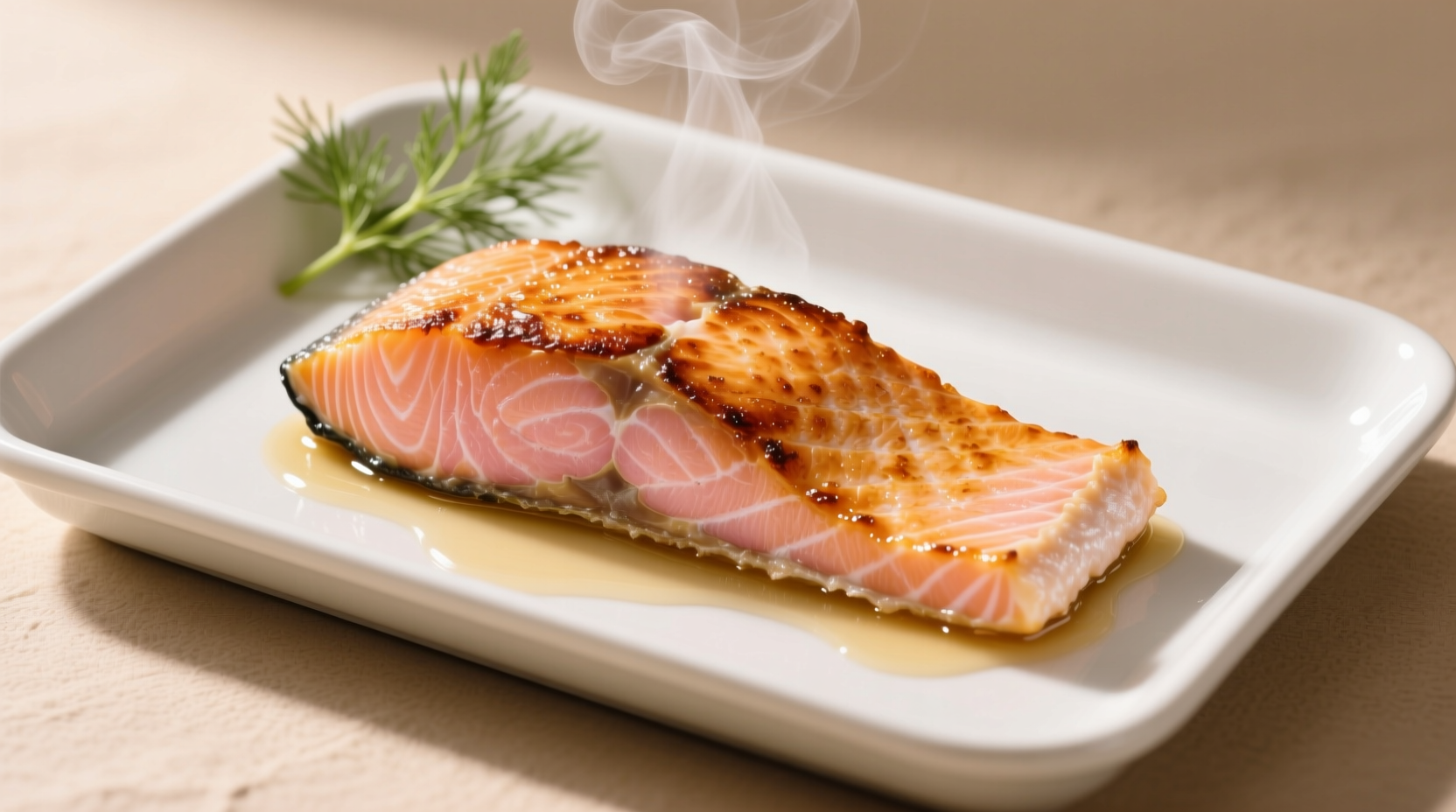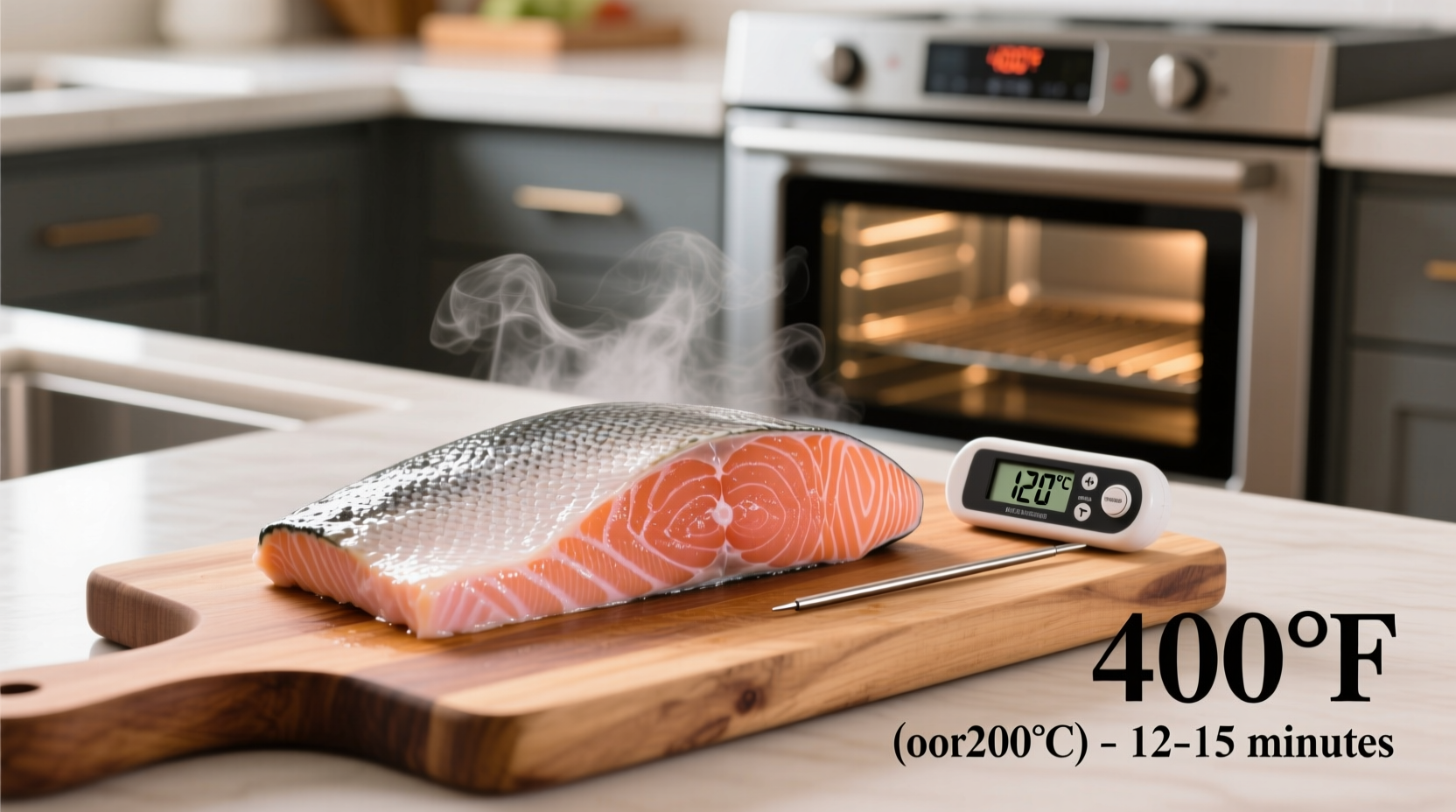The ideal oven temperature for cooking salmon is 375°F (190°C) for 12-15 minutes, resulting in perfectly cooked, flaky fish with a moist interior. This temperature balances cooking speed with moisture retention, preventing the delicate fish from drying out while ensuring food safety.
Mastering Salmon: Your Complete Oven Cooking Guide
Nothing compares to the satisfaction of pulling a perfectly cooked salmon fillet from your oven—moist, flavorful, and ready to impress. Getting the temperature right transforms this delicate fish from dry disappointment to dinner table triumph. Whether you're a weeknight warrior or weekend entertainer, understanding oven temperature dynamics makes all the difference.
Why 375°F Is the Sweet Spot for Salmon
After decades of culinary science research, food safety experts consistently identify 375°F as the optimal oven temperature for salmon. This moderate heat allows proteins to denature gradually without expelling too much moisture. At higher temperatures, salmon's delicate flesh contracts too rapidly, squeezing out precious juices. Lower temperatures prolong cooking time, increasing the risk of uneven doneness.
The USDA Food Safety and Inspection Service confirms that fish reaches safe internal temperatures more reliably at this moderate setting. Their research shows that 375°F provides the ideal thermal gradient for even cooking from surface to center.
| Oven Temperature | Cooking Time (1-inch fillet) | Texture Result | Best For |
|---|---|---|---|
| 375°F (190°C) | 12-15 minutes | Moist, flaky, uniform | Most home cooking scenarios |
| 400°F (204°C) | 10-12 minutes | Slightly crisp exterior | Thicker cuts, skin-on preparations |
| 350°F (177°C) | 15-18 minutes | Very moist, delicate | Thin fillets, delicate recipes |
Temperature Variables That Actually Matter
Your oven's thermostat isn't the only factor determining perfect salmon. These context boundaries significantly impact your results:
- Fillet thickness: Add 3-5 minutes per additional 1/4 inch of thickness
- Starting temperature: Cold-from-fridge salmon needs 2-3 extra minutes versus room-temperature
- Rack position: Middle rack provides most even heat distribution
- Pan material: Glass dishes require 25°F lower temperature than metal
According to the James Beard Foundation's culinary research, the critical internal temperature for properly cooked salmon ranges between 125°F-140°F (52°C-60°C). Below 125°F risks undercooking; above 140°F guarantees dryness. A reliable instant-read thermometer eliminates guesswork.
Step-by-Step Perfect Salmon Method
Follow this professional technique for consistently excellent results:
- Pat salmon completely dry with paper towels
- Season with salt 15 minutes before cooking (draws out excess moisture)
- Preheat oven to 375°F with rack in center position
- Place salmon skin-side down on parchment-lined baking sheet
- Cook until internal temperature reaches 125°F-130°F at thickest part
- Rest 5 minutes before serving (temperature will rise 5-10°F)

Avoiding Common Temperature Mistakes
Even experienced cooks fall victim to these temperature pitfalls:
- The preheat rush: Putting salmon in before oven reaches target temperature creates uneven cooking
- Overcrowding: Multiple pans block heat circulation, lowering effective temperature
- Peeking too often: Each oven opening drops temperature by 25°F-50°F
- Ignoring carryover cooking: Salmon continues cooking after removal from oven
The Culinary Institute of America's cooking science department emphasizes that oven thermometers vary significantly from actual temperatures. Their studies show home ovens frequently deviate by 25°F-50°F from displayed settings. Investing in an independent oven thermometer costs less than a single ruined salmon fillet.
When to Adjust Standard Temperature
While 375°F works for most situations, these scenarios warrant temperature adjustments:
- Skin-on preparations: Start at 400°F for 5 minutes to crisp skin, then reduce to 350°F
- Whole side of salmon: Reduce to 325°F and extend cooking time to 25-30 minutes
- Frozen salmon: Increase temperature to 400°F and add 5-8 minutes cooking time
- Marinated fish: Lower to 350°F to prevent sugar burning in glazes
Food Science Magazine published research showing that lower temperatures (325°F-350°F) better preserve omega-3 fatty acids in salmon during cooking. If nutritional retention is your priority, consider slightly lower temperatures with extended cooking times.
Testing Doneness Without a Thermometer
When cooking multiple portions or without a thermometer, use these visual and tactile indicators:
- Flake test: Gently press center with fork—should separate into large flakes
- Color change: Translucent pink becomes opaque salmon color throughout
- Resistance: Properly cooked salmon offers slight resistance when pressed
- Shrinkage: Cooked fillets shrink approximately 20% from raw size
Remember that carryover cooking continues the process after removal from oven. Always remove salmon 5°F below your target final temperature. This precision transforms good cooking into exceptional results.
Perfect Pairings for Temperature-Perfect Salmon
Complement your perfectly cooked salmon with these temperature-aware accompaniments:
- Citrus-dill sauce: Whisk together 1/4 cup Greek yogurt, 2 tbsp lemon juice, 1 tbsp fresh dill
- Roasted asparagus: Cook alongside salmon at same temperature (12-15 minutes)
- Lemon-herb quinoa: Prepare while salmon rests for complete meal timing
- Garlic sautéed spinach: Finish in 5 minutes while salmon rests











 浙公网安备
33010002000092号
浙公网安备
33010002000092号 浙B2-20120091-4
浙B2-20120091-4